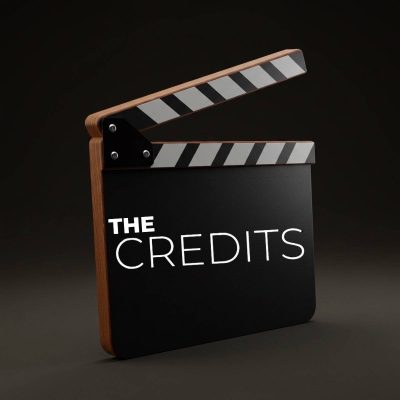Slamdance 2015: Gabrielle Demeestere on Adapting James Franco’s Yosemite
Last night Slamdance Film Festival’s closing night selection was Yosemite, adapted and directed by Gabrielle Demeestere from three of James Franco’s short stories, earning her a female directing grant from the festival for her fantastic first effort. Yosemite is structured as a triptych, following the thread of three 5th graders, Chris, Joe and Ted, who all live in Palo Alto, a picturesque Californian suburb that Demeestere infuses with dread. In the opening section, Chris stumbles upon a fire while camping with his dad (Franco) and younger brother in Yosemite, and what Chris sees burning in the flames initiates the film's creeping sense of reckoning. In the second section, Joe, feeling outcast and invisible, strikes up a friendship with the much older Henry, a drifter who charms Joe with comic books and soda. Demeestere perches their relationship on the edge of catastrophe. And finally, as we get to know Ted, we wait anxiously for the arrival of the mountain lion whose been stalking the community from the film’s opening seconds (the mountain lion is also teased in the film’s fantastic opening credits).
Throughout it all, Demeestere manages to ratchet up the tension while delivering a realistic rendering of the way boys behave. Chris, Joe and Ted experience the world of Palo Alto with a mixture of fascination, boredom, cruelty and compassion. It’s an impressive rendering of the realities and surrealities of childhood from a first time feature director working largely with a cast of kids.
We spoke with Demeestere about what it was like filming her first feature, working with Franco and a half dozen children, and shooting in Yosemite in the middle of winter.
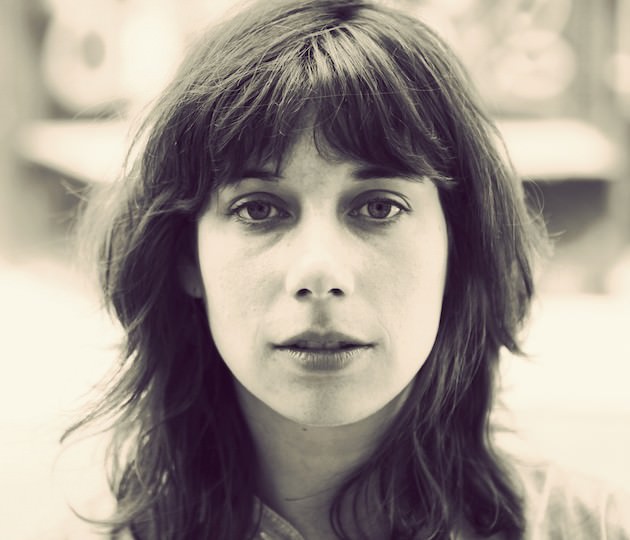
So how’d you get involved in the project?
I was classmates with James at NYU, and we had worked on this project called The Color of Time in Detroit, where he’d asked me to do one of the short films, it’s twelve directors and twelve shorts made into one feature. And that was a great experience, so after that it kind of randomly came about that he was in the process of getting people to adapt the Palo Alto stories, so he asked me if I wanted to adapt two stories into a movie for my thesis film at NYU. And that was the “Yosemite” story and the “Peter Parker” story from his book “A California Childhood.”
And you added a third piece?
He thought it could be a diptych, because there were these two stories about two kids and their dads, and so I thought about it for a while, and I liked the mood of each story, they were very cinematic and specific, so I wanted to keep them as is, but it felt like the diptych wasn’t enough for a full feature film. So I wrote a third story, and I created the framework that connects the kids together, and that was the part that took the longest. It was very quick to adapt the first two stories, but then I worked for at least six months trying to figure out the perfect dramatic way to create those connections so that it would come together dramatically and be satisfying.
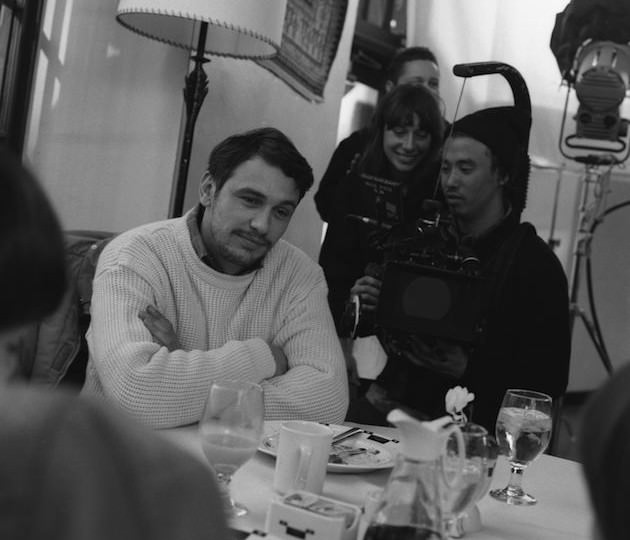
So what it was your experience like working on your first feature?
It was amazing and hard at the same time. We shot it last fall in Palo Alto, and then we did this crazy four-day shoot in Yosemite over New Year’s. Which was kind of when James had time off, was during the holidays.
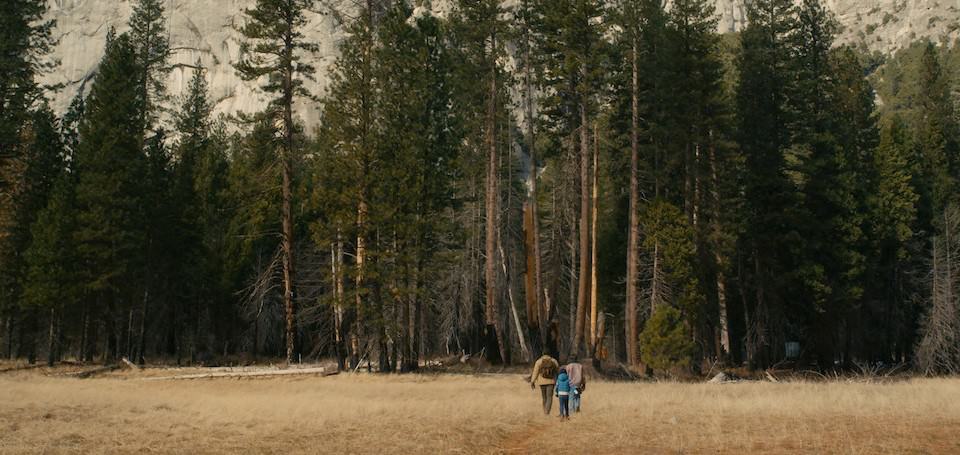
How difficult was it shooting in Yosemite, getting the permits, the space?
It was long, but they were super welcoming and super great. The rangers were amazing. They were there during the shoot and they were these cool women, and they helped us scout. They found us good spots to shoot in. It was tough, though, it was the middle of the winter and we slept in Curry Village, which are these heated tents, so I definitely had a moment where I was showering in the dark, tramping through the snow, and thinking, ‘I have to go direct a movie?’ It seemed like a lot, but it was definitely fun and a bonding experience.
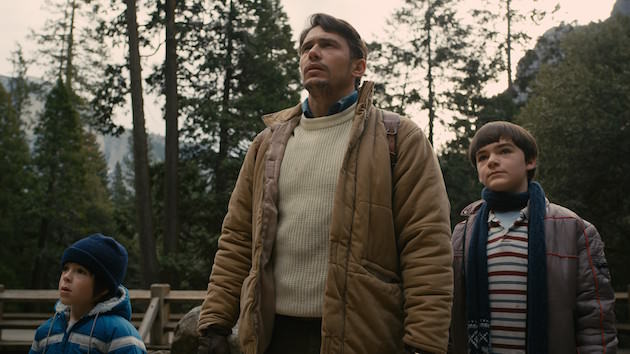
How long was the process for you, from adapting the stories through to post production?
The project came about three years ago, and then I spent a year on and off on the script, and then there was a year of pre-production where we did the Indiegogo campaign, and all that came together. And then from production to now, including post, it was another year.
What did your final production budget turn out to be?
The whole thing super low budget, but we had this amazing thing where I got this grant from NYU called The Film Factory Award, and it’s this post-production house in Paris, and it’s the first year they’ve done this where they give free post-production to a first NYU feature film, so it was five weeks of design, two weeks of sound mix, two weeks of color, and they’re amazing professionals, so that was super lucky. And NYU has this production fund that helped finance a little bit of the post. So that really allowed us to finish.
It’s a gorgeous film.
Yeah, the DPs were amazing, they’re classmates of mine from NYU. There were two of them (Chananun Chotrungroj and Bruce Thierry Cheung), they’re very close and we all know each other well. We shot an A and B camera, which sort of disoriented some of the crew, because we were this weird triangular force, but it worked out great. We had a very tight schedule, around 17 days, and with kids those are very short days.
The kids are very good. I thought it was especially poignant how they treat each other, how the allegiances shift, which is very much what happens when you’re young. One day you’re best friends, the next day you hate each other.
That was always the idea, and one of the things I liked about having a triptych structure was that you could get to know someone really well, and then see their social or their public self, and see them totally differently. Ideally you’d feel for them.
The way the kids speak to one another…
Yeah, some of that great slang came right from James’ story, like calling Joe dickless, there’s a scene that was cut where they call him shit-sucker [laughs].
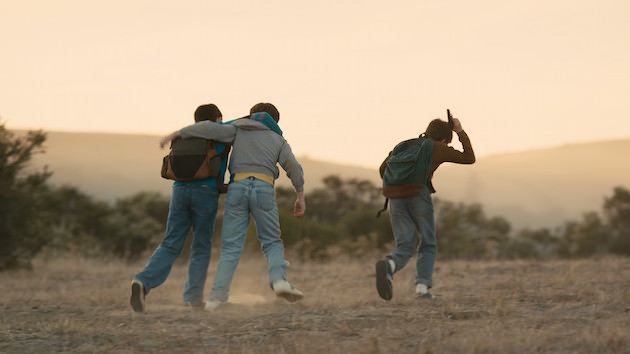
And the threat of this mountain lion that stalks the entire film?
There was a mountain lion in another one of James's stories that gave me the idea to develop the framework.
There are several different points of threat in Yosemite, including the mountain lion, Joe’s relationship with Henry, the train tracks…as a first time director, how did you pace your film to keep these various threads taut?
We really discovered that in the edit, that there was this feeling of things almost happening but not quite, and then we worked really hard to build that tension. In the edit we built the tension of the mountain lion by adding the news footage, and then we really built it through the music and the sound. And then you just have these cool surprises with films where you can discover the tone as you’re editing. Or maybe it was there all along but you kind of find it. And that was definitely a revelation when that happened.
There's a feeling of dread shot through the entire film. Right off the bat, with James' character taking his two kids to Yosemite, you feel that they should be having the time of their life but there's something unsettling going on.
I guess unconsciously it was in James’s story, in “Yosemite” there was this dread that this kid is supposed to be happy because he’s in this beautiful place on and adventure, but there’s that dread that I’ve felt before, like when I went to Alaska and instead of being happy, I felt tiny and mortal and depressed [laughs], so that’s kind of in the story.
And what about with Joe and Henry, that relationship that feels ready to turn into something very wrong…
You don’t know if this guy is really a pedophile or not, and for a long time I was like, ‘Well is this the beginning of something bad? Or this is actually all in the kid’s head because he’s doing something forbidden?’ So I think that James and I may have different answers about it, but I really latched on to that un-canniness and uncertainty about whether or not something bad is going to happen. So probably when I wrote the third part of the story, I was continuing that feeling with the mountain lion. This dread was what most interested me about these stories. It feels specific to that time in childhood where you don’t know what’s out there.
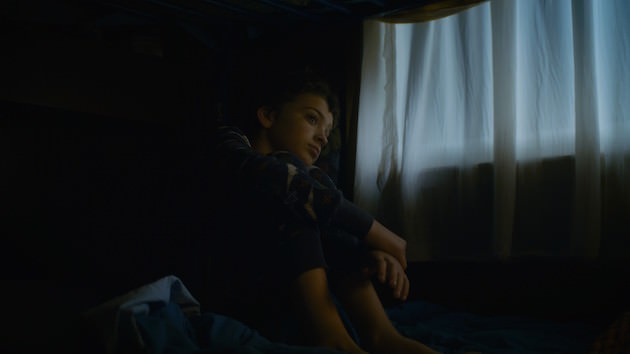
You have a lot of really great period detail in this film, stuff from the 80s I haven’t seen or thought about since I was a kid. One moment that struck me was the sex-line commercial on their TV when they’re at the cabin in Yosemite.
That was a very funny find. I looked through a lot of archival footage and I asked a friend if they knew any eighties late night TV stuff, like erotic stuff, and randomly they sent me these four videos, and they had a fire and a cat in it, and I was like, ‘What the hell?’ [laughs]. I don’t want to sound new age, but there was a lot of serendipity throughout the shoot, weird little signs. I mean this commercial had a cat and a fire [two major elements in the film], there was just a vibe about the whole thing. Palo Alto is suburban in a way, but it has a trippy vibe because the light is so bright, the nature’s amazing, everything kind of fell into place. We got to shoot in a lot of cool locations for free.
Why’s that, because it was James’s home town?
Yeah, there was a community, grassroots excitement about it being James’ home town and wanting to participate and help. We got a lot of great people to give us housing, art department stuff, locations, it was huge. We’d knock on a door and this woman would open, and somehow she’d be like, ‘Come in, shoot here.’
Tell me about the opening, that incredible Atari video game look. It reminded me of the game “Pitfall!,” which was, for a certain segment of the population in the 80s, the greatest game of all time.
I was looking at a bunch of opening credits, because I felt like it needed something that places you in the childhood world and the 80s world a little more strongly, and I was looking at the Crystal Fairy credits, that I love. It’s this studio called Smog, and I just really like them. And randomly a friend of mine who’s Chilean knew him, so emailed him and he really liked the movie. It actually took months to come up with it, because he did these gorgeous credits at the beginning that was this animated illustration, but it wasn’t period, and the production designer (Maki Takenouchi) has been the number one period Nazi, and she’s been amazing at helping create the world, so she said that the credits had to be only stuff you could have made in the eighties. At first we were disappointed because it didn’t look as cool, but eventually it came to us and we were really happy.
Going back to this being your first feature, at any point did you feel overwhelmed?
I think I felt very lucky, because of the way it came about was so unexpected, so I didn’t go looking for it. James came to me with the project, and I really liked the stories, so I really felt like I had to make something good of that opportunity. It made me want to do my best and work on every aspect of the movie. Like with the credits, I felt I had to make them awesome, I had to make the sound awesome, everything was important. You don’t really get that opportunity many times. On set, I guess I felt overwhelmed, but I had a moment where I realized how hilarious it was that you actually don’t know anything. I felt like, ‘Well, I don’t really know anything, and I won’t know it until I’ve done it,’ so it was sort of funny in that way. No one tells you that, that you actually don’t know what the hell you’re doing, so you just have to do it and you’ll get better at it. It was a good existential realization.


